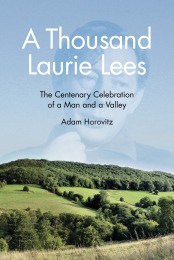Writing the landscape
 How the landscape is written about is something I’m exploring at the moment. That which we do not talk about, we tend not to value. If we don’t have words, or a language for something, then often we don’t pay as much attention to it anyway. With our landscapes threatened by all manner of ill conceived development, with rising urbanisation and a generation of children who are more familiar with Daleks than magpies, it seems important to me not only to talk about the land, but to make sure I’m doing that well.
How the landscape is written about is something I’m exploring at the moment. That which we do not talk about, we tend not to value. If we don’t have words, or a language for something, then often we don’t pay as much attention to it anyway. With our landscapes threatened by all manner of ill conceived development, with rising urbanisation and a generation of children who are more familiar with Daleks than magpies, it seems important to me not only to talk about the land, but to make sure I’m doing that well.
My natural default when I don’t know an answer to something large, is to read books. At the moment I’m reading as much Gloucestershire orientated material as I can, because it helps to know the place being described. I started the conscious leg of this journey with Robert McFarlane’s Landmarks (even though he’s not from round here!) and I have a growing ‘to read’ list.
Adam Horovitz’s “A Thousand Laurie Lees” follows in the footsteps of “Cider with Rosie” to tell of a childhood in beautiful Slad valley, and growing up there. It goes beyond the first book not only for being later (published on the centenary of Lee’s birth) but for being much more conscious of the relationship between the writing and the land. Cider with Rosie changed Slad. It brought tourists, second home owners and an array of arty people – Adam’s parents included – until the celebrity arts thing going on in Slad became an attraction in its own right and even lured the press out.
Alongside this, Laurie Lee used his status and the power of his book to protect his valley from development. Since his death, people have continued to evoke him; a protective spirit whose written vision of glorious childhood paints a glow over the valley that even hard nosed developers are a bit awed by. Slad is not uniquely beautiful, it has the same kind of charm, heritage and loveliness of all the valleys carved into the Cotswolds around here, only this one has a book to protect it, and others do not.
When a person sets out to write a book, there is no way of knowing what impact that book will have. It’s worth thinking about, anyway. What will be the impact of Adam Horovitz’s lyrical revisiting of this iconic place? I will have to go and look for the lost village he mentions. Who else will be moved to do what, there is no knowing, but like Cider with Rosie before it, this is a book with the potential to both record and change how people relate to a place.
It’s important, I think, that both “A Thousand Laurie Lees” and “Cider with Rosie” are as much autobiographies as they are books of place. Land and life are inextricably linked. Our formal history is surprisingly uninterested in where things happened, and treats geography as separate from history. And yet the geography here shapes the history – the steep sided valleys with their streams allow certain things and thwart others, and always have. The marks of historical mining and agriculture are in the land – life lived alters the landscape, and landscape shapes the life.
The relationship between who we are, and where we are, is something I want to consider further.
Find out more about “A Thousand Laurie Lees” here – http://www.thehistorypress.co.uk/inde...





